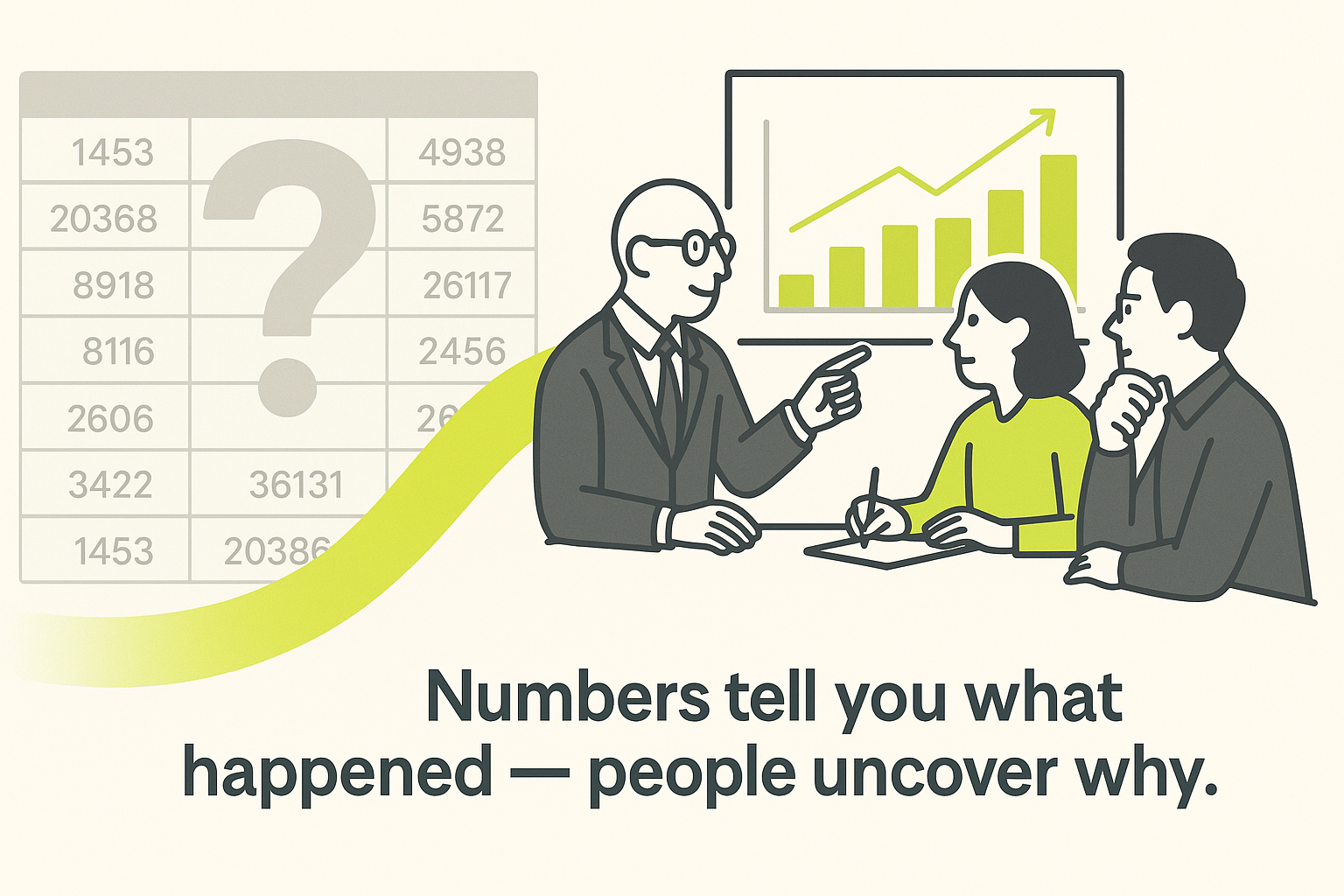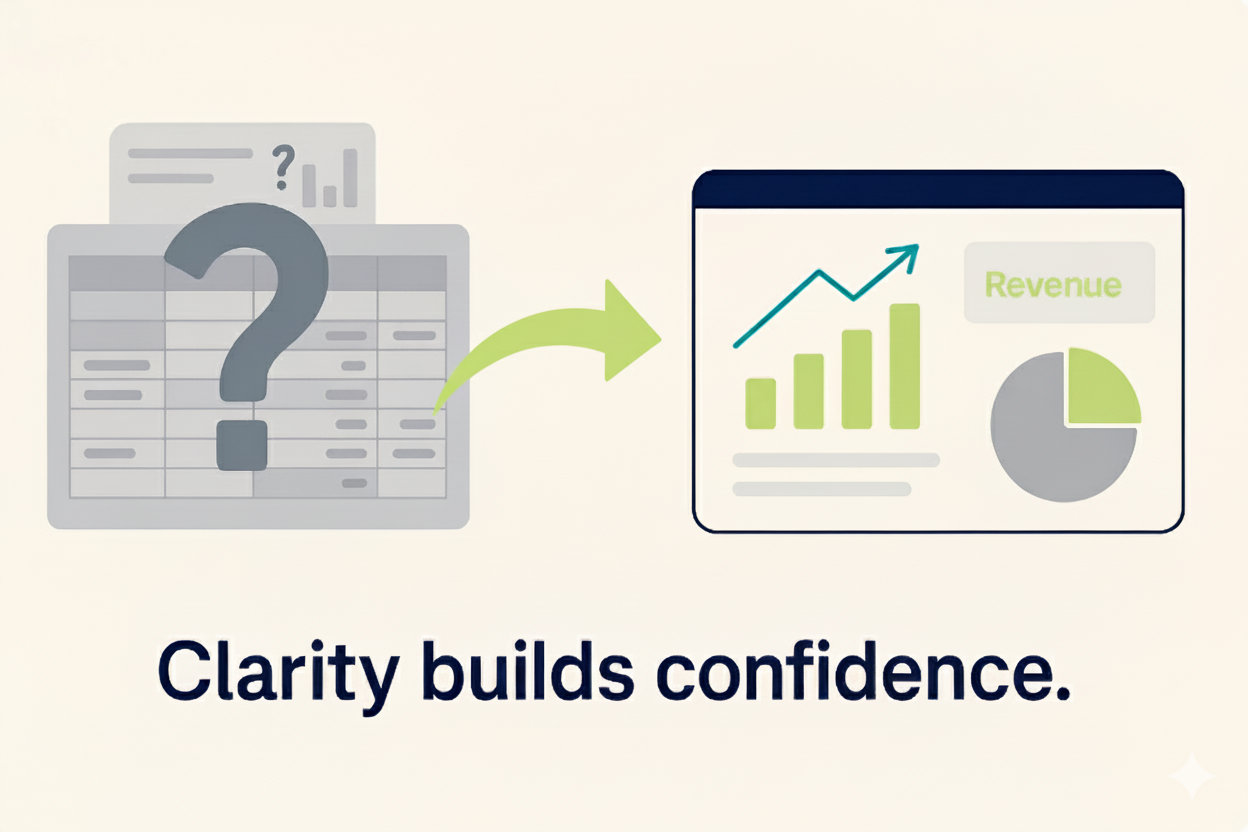Forecasting is one of those things every business does, but few truly use well. In many companies, it sits in a spreadsheet, updated once a year and quietly forgotten until something goes off track. It is treated as a technical task rather than a strategic tool. The problem is, when forecasting is done this way, it rarely builds confidence. It tells you what the numbers might look like, but not what they really mean; or how to act on them.
When forecasting is done properly, everything changes. The process forces you to look closely at what is working, what is not and what challenges are likely to appear in the year ahead. You build a plan that connects numbers to real business decisions; hiring, product development, market entry, marketing spend; and gives leadership a clear view of the road ahead. Done well, forecasting stops being a box-ticking exercise and becomes the foundation for confident decision-making. It is not just about predicting the future, it is about preparing for it with clarity and control.

Most forecasts fail not because the maths is wrong, but because the meaning is missing. A spreadsheet full of precise figures can look impressive, yet still fail to tell a useful story. Numbers alone cannot explain why performance looks the way it does or how a business can influence the outcome. Without context, even the most accurate forecast becomes little more than an estimate.
A strong financial plan begins with conversation, not calculation. It requires the CEO, CFO, management team and finance department to sit down together and build the forecast line by line. Each number should have a story behind it; whether that is a new client pipeline, a cost-saving initiative or a market trend. When stakeholders see that every assumption is supported by data and logic, their confidence grows. They can challenge, question and understand how each figure connects to the bigger picture. That shared understanding turns a forecast into a tool that leadership can rely on, not just report on.
Many companies believe they already forecast, but a closer look often tells a different story. Their numbers are built on optimism, not evidence. Growth projections are pencilled in without reference to past performance, customer acquisition costs, or conversion data. Budgets are approved with confidence, yet no one can clearly explain where the figures come from. These “thin-air forecasts” create the illusion of control while quietly eroding trust.
We saw this first-hand with an e-commerce client whose forecasts looked strong on paper but had little connection to reality. Together, we built a model that linked every stage of the customer journey; from ad spend (€) and cost per click to website visitors, engaged sessions, add-to-cart rates, completed orders and average order value. By grounding the forecast in real data, we could clearly show how each euro spent on marketing translated into traffic, engagement and ultimately sales. The result was not just a more accurate forecast, but a model the team could actually believe in; one that turned guesswork into measurable insight.
The problem is that when forecasts are not backed by data, the people who build them stop believing in them. Teams begin to re-budget mid-year, adjusting plans as reality catches up; a practice so common it feels normal, yet it defeats the purpose of forecasting altogether. At Quantro, we have seen that the moment a forecast becomes data-driven, everything changes. When every sales target, cost reduction or marketing spend is supported by real numbers and logical assumptions, the plan stops being an exercise in hope and becomes a foundation for decision-making. Forecasts are not just about being accurate; they must also be credible. Only then can they guide a business with confidence.
What makes this process powerful is that it is not just about data, it is about defining the right metrics. We build tailored KPIs that reflect how each business truly operates, rather than relying on generic benchmarks. For one client, that might mean tracking cost per engaged session; for another, the ratio of repeat orders to ad spend. These bespoke indicators turn a forecast into a living management tool; one that tells the real story of performance and gives leaders the confidence to act.
A forecast is only as good as the data and process behind it. Without reliable inputs and a consistent structure, even the most sophisticated models produce noise instead of insight. Many companies underestimate how much forecasting depends on discipline. It is not about building a single spreadsheet once a year; it is about creating a repeatable process that collects, tests and refines information over time. When your data is clean and your process is clear, your forecast becomes something the entire organisation can trust.
Data quality is not just a technical matter; it is a cultural one. Everyone involved, from sales and marketing to operations and finance, must understand their role in maintaining it. Forecasting should sit at the centre of business performance, linking strategic planning, budgeting and reporting. When leadership treats forecasting as an ongoing management tool rather than a compliance task, accountability naturally follows. People start owning the numbers, not just producing them. Over time, this builds a forecasting culture where confidence is not assumed but earned, one accurate, transparent update at a time.
Numbers on their own rarely inspire confidence; it is how you communicate them that makes the difference. A forecast should not only show what the future might look like, but why and how you expect to get there. When stakeholders understand the reasoning behind the numbers, they are far more likely to believe in them. This is why storytelling is just as important as data. Clear visuals, transparent assumptions and a concise narrative turn a spreadsheet into a conversation.
At Quantro, we find that the best forecasts don’t overwhelm with detail; they focus attention. A few well-chosen charts, a dashboard tailored to the right audience, and a story that connects financial outcomes to strategic choices; that is what builds trust. When you can walk an investor, a board member or a department head through the logic of your forecast and they can see the links for themselves, you move from reporting numbers to leading decisions. The goal is not just accuracy; it is belief.

Forecasting is not about predicting the future with perfect accuracy — it is about building the confidence to act in the face of uncertainty. When forecasts are treated as strategic tools rather than accounting exercises, they become a source of alignment across the business. The process itself creates value: teams debate assumptions, test ideas and understand the “why” behind every number. The result is a plan that people believe in, because they helped build it.
The businesses that forecast best are not the ones with the most complex models, but the ones that use their forecasts to make better decisions. They connect data with insight, numbers with narrative, and plans with people. Whether it is a founder deciding when to hire or a CFO planning for growth, confidence comes not from having all the answers, but from knowing your assumptions are sound. A good forecast does not just measure progress; it gives you the clarity and courage to move forward.
If you are ready to turn your forecasts into a tool for confident decision-making, we would love to help. Book a meeting with our team to explore how Quantro can build a model tailored to your business; one that gives you not just numbers, but clarity, control and confidence.
More from Quantro
Innovative cash flow management strategies are crucial for any business's survival and growth. In this blog, we cover optimising payment cycles, using financial tools for passive income, leveraging technology for real-time insights, and building a cash-savvy culture. The article provides practical advice, aiming to transform routine financial management into a strategic asset that enhances operational efficiency and financial stability, equipping businesses to navigate complex economic landscapes effectively.
Read More →Explore the complexities of scaling operations in service businesses. We look into recognising the right time to scale, addressing operational challenges, leveraging technology efficiently, maintaining exceptional customer experience, and managing team dynamics effectively. We use practical examples of how to use key performance indicators to navigate growth and ensure that your business not only expands in size but also enhances its capabilities and maintains its core values. Perfect for business leaders seeking to understand the nuances of sustainable growth in the service sector.
Read More →